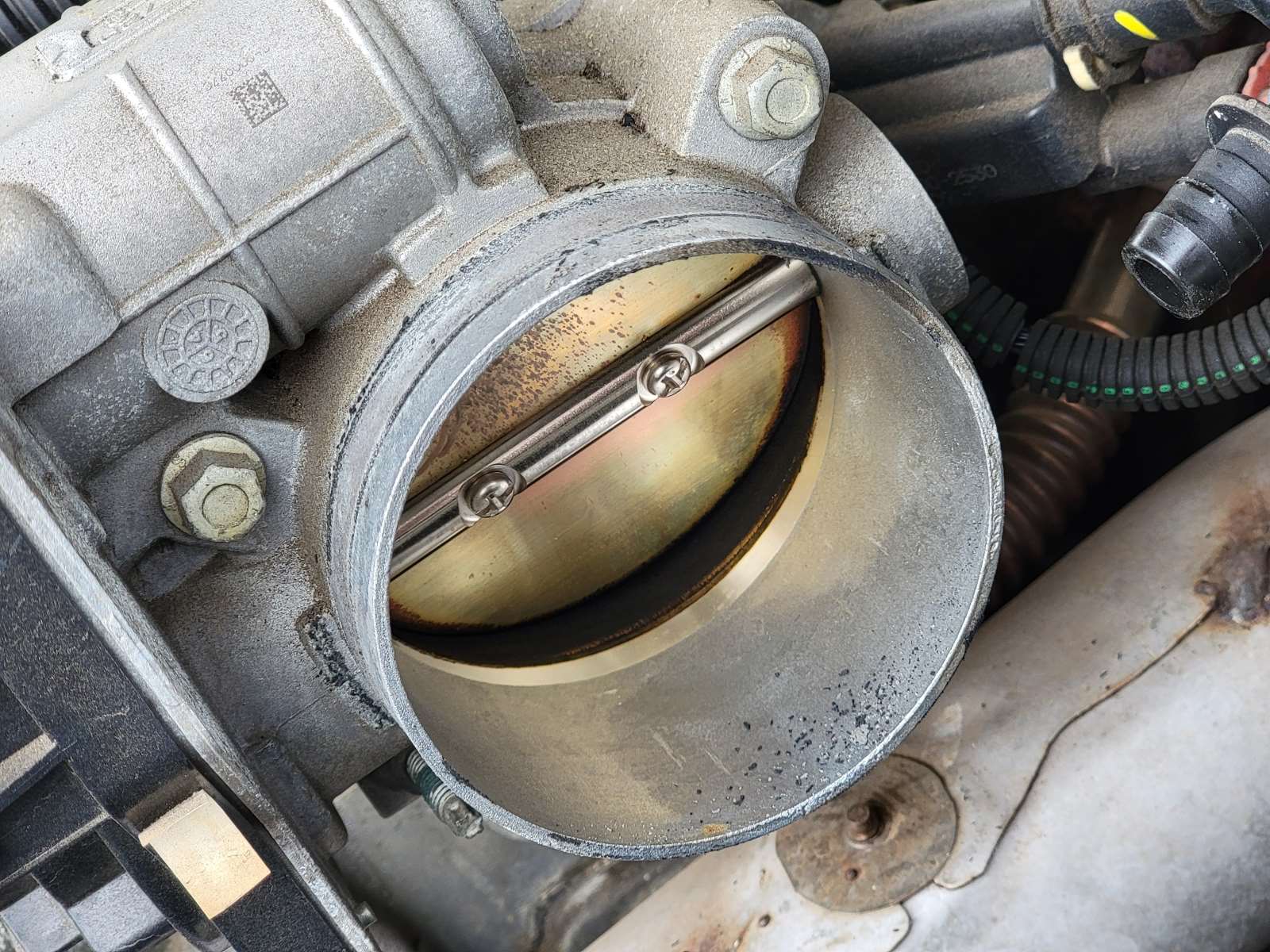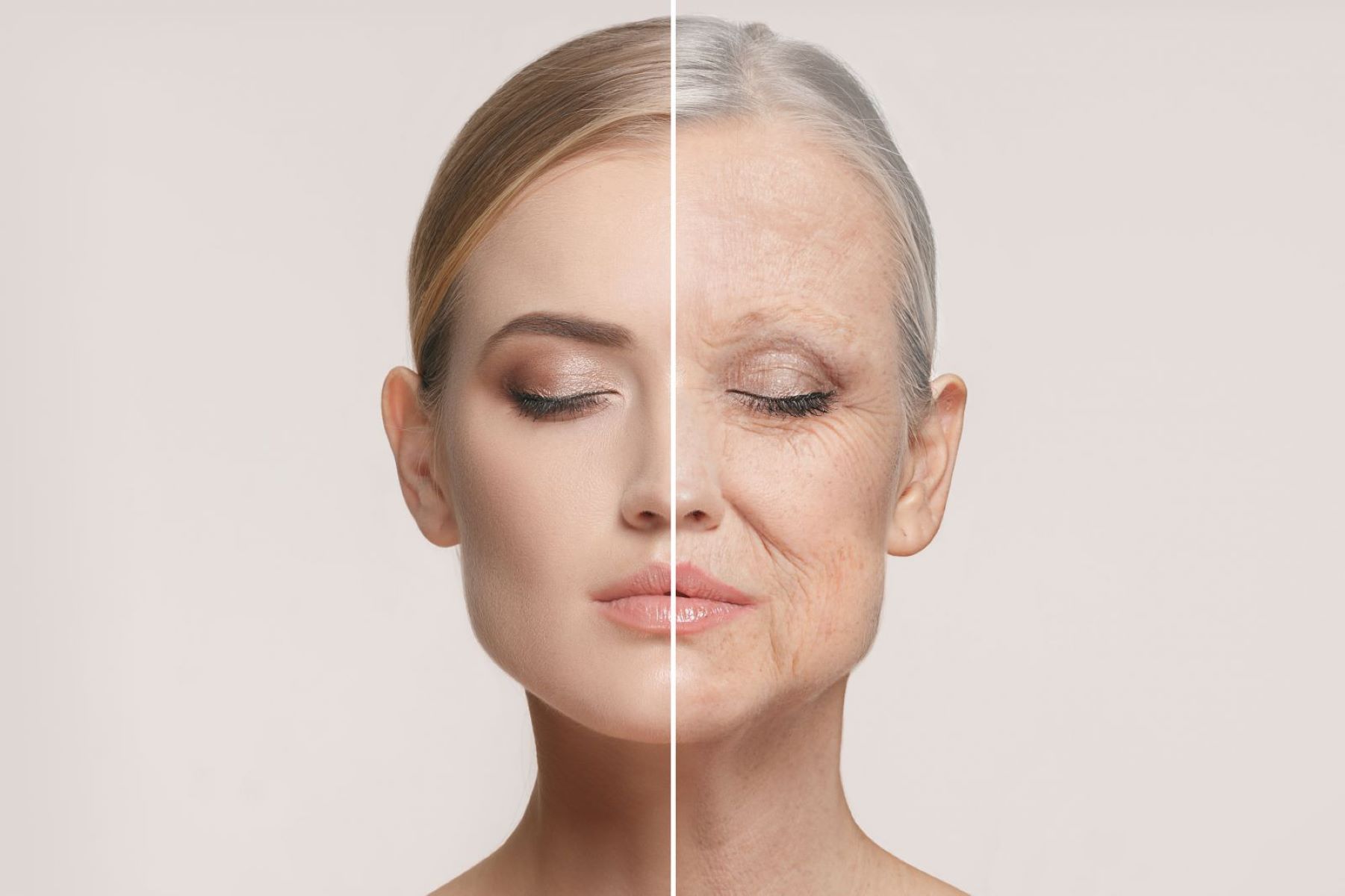Home>Health and Wellness>The Surprising Truth About The Cleanest Parts Of Your Body!


Health and Wellness
The Surprising Truth About The Cleanest Parts Of Your Body!
Published: January 18, 2024
Discover the surprising truth about the cleanest parts of your body and how it impacts your health and wellness. Learn more now!
(Many of the links in this article redirect to a specific reviewed product. Your purchase of these products through affiliate links helps to generate commission for Regretless.com, at no extra cost. Learn more)
Introduction
When it comes to personal hygiene, most of us have a pretty good idea of the areas we need to keep clean. We diligently wash our hands, take regular showers, and brush our teeth to maintain a fresh and healthy appearance. However, have you ever wondered which parts of your body are naturally the cleanest, regardless of your cleansing routines? It may come as a surprise, but there are certain areas that possess their own built-in defense mechanisms against harmful bacteria and odors.
In this article, we'll take a closer look at the surprising truth about the cleanest parts of your body. From the resilient properties of the skin to the self-cleansing capabilities of specific body parts, we'll explore how the human body maintains cleanliness in unexpected ways. Join us on this intriguing journey through the inner workings of our natural defense systems, and prepare to be amazed by the remarkable mechanisms that keep certain areas of our body naturally pristine. Let's dive into the fascinating world of bodily cleanliness and uncover the hidden marvels that make it possible!
The Skin
The skin, the largest organ of the human body, serves as a remarkable barrier that protects us from external threats. Its outermost layer, known as the epidermis, acts as a shield against harmful microorganisms, such as bacteria and fungi, while also preventing excessive water loss and shielding us from UV radiation. The skin's natural oils, known as sebum, not only keep it supple and hydrated but also possess antimicrobial properties that help combat potential infections.
Furthermore, the skin is equipped with a population of beneficial bacteria known as the skin microbiota. These microorganisms play a crucial role in maintaining the skin's health by outcompeting harmful bacteria and bolstering the immune system. Additionally, the shedding of dead skin cells, a continuous process known as desquamation, contributes to the removal of potential pathogens from the skin's surface.
Intriguingly, the skin's acidic pH, typically ranging from 4 to 6, creates an inhospitable environment for many pathogens. This natural acidity, in conjunction with the skin's physical barrier, forms a formidable defense against external threats. Moreover, the skin's ability to rapidly heal itself through processes such as cell regeneration and the production of collagen further underscores its exceptional cleanliness.
Despite these remarkable natural defenses, it's important to maintain good skincare practices to support the skin's innate cleanliness. Regular cleansing with mild, pH-balanced soaps can help remove excess oils and debris without disrupting the skin's natural protective barrier. Moisturizing the skin with suitable products can also aid in preserving its integrity and suppleness.
In essence, the skin stands as a testament to the body's innate ability to maintain cleanliness. Its multifaceted defense mechanisms, from the skin microbiota to its acidic pH, work harmoniously to uphold its natural purity. By understanding and appreciating the skin's remarkable attributes, we can further cultivate a sense of reverence for this extraordinary organ and the intricate mechanisms that sustain its cleanliness.
The Mouth
The mouth, often considered the gateway to our overall health, harbors a surprising level of natural cleanliness. It's home to a diverse ecosystem of microorganisms, including bacteria, viruses, and fungi, collectively known as the oral microbiota. While this might sound concerning, the oral microbiota plays a crucial role in maintaining the mouth's cleanliness and overall well-being.
One of the mouth's most remarkable natural defense mechanisms is saliva, a clear fluid secreted by the salivary glands. Saliva serves as a powerful cleansing agent, constantly washing away food particles, debris, and harmful microorganisms from the surfaces of the teeth and gums. Moreover, it contains enzymes and proteins that help neutralize acids and fight off potentially harmful bacteria, contributing to the mouth's inherent cleanliness.
The oral microbiota, when in a balanced state, acts as a protective shield, preventing the overgrowth of harmful bacteria that can lead to oral health issues. Certain beneficial bacteria in the mouth produce antimicrobial substances that inhibit the growth of harmful strains, thereby contributing to the natural cleanliness of this vital cavity.
Furthermore, the mouth's pH level, when within the healthy range, creates an environment that discourages the proliferation of harmful bacteria. The presence of saliva, with its buffering capacity, helps maintain the pH balance, further supporting the mouth's natural defense against microbial imbalances.
Regular oral hygiene practices, such as brushing the teeth, flossing, and using mouthwash, are essential for supporting the mouth's natural cleanliness. These habits help remove plaque, food particles, and bacteria that may accumulate on the teeth and gums, thus aiding in the preservation of oral health.
In essence, the mouth's natural cleanliness is a result of the harmonious interplay between saliva, the oral microbiota, and the body's innate defense mechanisms. By understanding and appreciating these natural processes, we can cultivate a deeper awareness of the mouth's remarkable ability to maintain its cleanliness and contribute to our overall well-being.
The Gut
The gut, also known as the gastrointestinal tract, is an intricately designed system that encompasses the stomach, small intestine, large intestine, and other vital digestive organs. Beyond its primary function of digesting food and absorbing nutrients, the gut plays a pivotal role in maintaining overall health, including immune function and mental well-being. Surprisingly, the gut possesses its own innate mechanisms for maintaining cleanliness and warding off harmful pathogens.
One of the gut's most remarkable features is its robust immune system. The gut-associated lymphoid tissue (GALT), a component of the body's immune system, is intricately woven throughout the gastrointestinal tract. This network of immune cells acts as a vigilant guardian, constantly surveilling the gut for potential threats such as harmful bacteria, viruses, and toxins. Through a complex interplay of immune cells, antibodies, and specialized gut-associated lymphoid structures, the gut's immune system effectively identifies and neutralizes potential invaders, thereby contributing to its natural cleanliness.
Moreover, the gut is home to trillions of beneficial microorganisms collectively known as the gut microbiota. These microorganisms, comprising a diverse array of bacteria, viruses, fungi, and other microbes, play a pivotal role in maintaining gut health and cleanliness. The gut microbiota forms a protective barrier against harmful pathogens by outcompeting them for resources and producing antimicrobial substances that inhibit their growth. Additionally, these beneficial microbes help fortify the gut's immune response, further bolstering its natural defense mechanisms.
The mucus layer that lines the gut serves as another key component in maintaining its cleanliness. This protective layer, secreted by specialized cells in the gut, acts as a physical barrier, shielding the gut's delicate lining from potential pathogens and irritants. It also provides a habitat for beneficial bacteria, facilitating their role in preserving gut health and cleanliness.
Furthermore, the gut's peristaltic movements, rhythmic contractions that propel food and waste through the digestive tract, contribute to its natural cleanliness by efficiently expelling waste and preventing the accumulation of harmful substances. This continuous movement helps maintain a healthy gut environment, reducing the risk of bacterial overgrowth and supporting optimal digestive function.
In essence, the gut's natural cleanliness is a testament to its sophisticated design and the intricate interplay of immune defenses, beneficial microorganisms, and physical barriers. By nurturing a deeper understanding of the gut's innate mechanisms for maintaining cleanliness, we can cultivate a greater appreciation for this vital system and its profound impact on overall health and well-being.
The Armpits
The armpits, often associated with sweat and body odor, may not seem like a place synonymous with cleanliness. However, beneath the surface, the armpits possess their own remarkable mechanisms for maintaining natural purity.
One of the most intriguing features of the armpits is the presence of specialized sweat glands, known as apocrine glands. These glands secrete a milky fluid that, unlike the sweat produced by eccrine glands found elsewhere on the body, is virtually odorless. The distinct odor associated with armpits actually arises when the apocrine gland secretions interact with bacteria on the skin's surface, leading to the production of characteristic body odor. Despite this, the apocrine glands' primary function is not to cause odor but rather to release a substance that, when combined with the skin's natural bacteria, can act as a pheromone, playing a role in social communication and mate selection.
The armpits also harbor a diverse array of microorganisms that contribute to their natural cleanliness. The skin's microbiota, comprising beneficial bacteria, fungi, and other microorganisms, plays a crucial role in maintaining the armpits' ecological balance. These microorganisms outcompete potential pathogens, thus supporting the overall cleanliness of the armpits. Furthermore, the skin's acidic pH, combined with the antimicrobial properties of sweat, creates an environment that inhibits the proliferation of harmful bacteria, further contributing to the armpits' innate cleanliness.
Despite the armpits' natural defense mechanisms, it's essential to practice good hygiene habits to support their cleanliness. Regular cleansing with mild soap and water helps remove bacteria and sweat residue, thus preventing the buildup of odor-causing substances. Additionally, keeping the armpits dry and well-ventilated can help discourage the growth of odor-producing bacteria.
In essence, the armpits' natural cleanliness is a testament to the intricate interplay of specialized sweat glands, beneficial microorganisms, and the skin's innate defense mechanisms. By understanding and appreciating these natural processes, we can cultivate a deeper awareness of the armpits' surprising ability to maintain their cleanliness and contribute to our overall well-being.
Read more: The Truth About 36 24 36 Body Measurements
The Genital Area
The genital area, encompassing the external reproductive organs, is often considered a private and sensitive region of the body. Despite its association with intimacy and personal hygiene, the genital area possesses its own remarkable mechanisms for maintaining natural cleanliness and overall well-being.
One of the most notable features of the genital area is its unique microbiota, comprising a diverse array of microorganisms that play a crucial role in preserving its cleanliness. The delicate balance of beneficial bacteria, yeasts, and other microorganisms in this region contributes to its ecological equilibrium, preventing the overgrowth of harmful pathogens and supporting a healthy environment.
Additionally, the genital area is equipped with specialized sebaceous glands that secrete natural oils, helping to maintain the skin's suppleness and protect against dryness. These oils, in conjunction with the skin's natural pH, create an environment that discourages the proliferation of harmful bacteria and fungi, thus contributing to the genital area's innate cleanliness.
Furthermore, the genital area's mucous membranes, which line the internal reproductive organs, serve as a vital barrier against potential pathogens. These membranes produce mucus that acts as a protective shield, helping to trap and expel harmful microorganisms while maintaining an optimal environment for the growth of beneficial bacteria.
While the genital area possesses its own natural defense mechanisms, it's essential to practice good hygiene habits to support its cleanliness. Regular cleansing with mild, pH-balanced soaps can help remove excess oils and debris without disrupting the natural protective barrier of the skin. Additionally, maintaining proper intimate hygiene and using suitable products designed for this sensitive area can contribute to its overall cleanliness and well-being.
In essence, the genital area's natural cleanliness is a result of the harmonious interplay between its microbiota, natural oils, mucous membranes, and the body's innate defense mechanisms. By understanding and appreciating these natural processes, we can cultivate a deeper awareness of the genital area's remarkable ability to maintain its cleanliness and contribute to our overall well-being.
Conclusion
In conclusion, the human body is a marvel of natural engineering, equipped with an array of remarkable mechanisms that contribute to the maintenance of cleanliness in unexpected ways. From the skin's multifaceted defense systems to the oral microbiota's role in preserving oral health, and from the gut's immune defenses to the surprising cleanliness of the armpits and genital area, our bodies exhibit an extraordinary capacity for self-preservation and natural purity.
As we delved into the surprising truth about the cleanest parts of the body, we uncovered the intricate interplay of beneficial microorganisms, natural oils, and immune defenses that contribute to the innate cleanliness of these vital areas. The skin, our largest organ, stands as a testament to the body's ability to maintain cleanliness through its acidic pH, skin microbiota, and self-healing properties. Similarly, the mouth's saliva and oral microbiota play a pivotal role in preserving oral health and cleanliness, highlighting the mouth's natural defense mechanisms.
Moving deeper into the body, we explored the gut's robust immune system and the essential role of the gut microbiota in maintaining gut health and cleanliness. Surprisingly, even the often-misunderstood armpits and genital area revealed their own natural defense mechanisms, including specialized sweat glands, unique microbiota, and protective barriers, contributing to their surprising cleanliness.
By gaining a deeper understanding of these natural processes, we can foster a greater appreciation for the body's innate ability to maintain cleanliness and overall well-being. While it's crucial to practice good hygiene habits to support the body's natural defenses, such as regular cleansing and proper skincare, recognizing and respecting the body's inherent mechanisms for cleanliness can inspire a profound sense of awe for its resilience and complexity.
Ultimately, the surprising truth about the cleanest parts of the body serves as a reminder of the body's extraordinary capabilities and the intricate balance of natural processes that contribute to its remarkable cleanliness. Embracing this understanding can empower us to nurture a deeper connection with our bodies and cultivate a profound respect for the awe-inspiring mechanisms that sustain our health and vitality.














